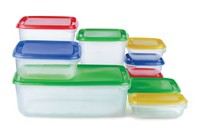Advertisement
Grab your lab coat. Let's get started
Welcome!
Welcome!
Create an account below to get 6 C&EN articles per month, receive newsletters and more - all free.
It seems this is your first time logging in online. Please enter the following information to continue.
As an ACS member you automatically get access to this site. All we need is few more details to create your reading experience.
Not you? Sign in with a different account.
Not you? Sign in with a different account.
ERROR 1
ERROR 1
ERROR 2
ERROR 2
ERROR 2
ERROR 2
ERROR 2
Password and Confirm password must match.
If you have an ACS member number, please enter it here so we can link this account to your membership. (optional)
ERROR 2
ACS values your privacy. By submitting your information, you are gaining access to C&EN and subscribing to our weekly newsletter. We use the information you provide to make your reading experience better, and we will never sell your data to third party members.
Recycling
Platinum catalyst turns polypropylene into motor oil
Approach offers alternative to mechanical recycling
by Fernando Gomollón-Bel, special to C&EN
November 4, 2021
| A version of this story appeared in
Volume 99, Issue 41

A new platinum catalyst converts polypropylene plastic into valuable liquid hydrocarbons, primarily motor oil (ChemSusChem 2021, DOI: 10.1002/cssc.202101999).
Supported on carbon, platinum nanoparticles catalyze the degradation of the polymer, but the new surface is engineered to stop breaking the chains at a target size. “We control the adsorption energy [at the catalyst surface] to detach hydrocarbons after they reach a certain length,” says Antonio J. Martín, co-author of the study.
Polypropylene represents 30% of all plastic waste. So far, efforts to recycle it have been limited to mechanical recycling, where the plastic is ground and melted into new products, but this approach results in lower quality products with every cycle. Researchers would like to find chemical recycling approaches that avoid this problem, but this has been a challenge for polypropylene. “This polymer has a very homogeneous chain, thousands of carbon atoms long,” explains lead author Javier Pérez Ramírez. “Therefore, controlling the cracking reactions is really hard.” The characteristic methyl groups that hang from the main polypropylene chain further complicate depolymerization, he says.
The key to this new approach is oxygen. By exposing the carbon surface to different concentrations of an oxidant, the team tuned the number of oxygen atoms in the surface lattice. Varying the degree of oxygenation leads to different outcomes by regulating adsorption and desorption processes. Less surface oxygen forces molecules to stick longer, yielding smaller hydrocarbons like gases, while a highly oxidized catalyst prevents the reaction from happening at all. “Luckily, we found the optimal oxygen content and platinum particle size to selectively yield liquid hydrocarbons,” says Pérez Ramírez. “Further experiments will enhance the tunability of this reaction.”
Haritz Sardon, a polymer expert based at POLYMAT, is impressed by the homogeneity of the product, which is 80% motor oil and 20% diesel and gasoline. Other state-of-the-art transformations often lead to complicated mixtures, he says.
Ina Vollmer, an expert in chemical recycling at Utrecht University, finds this new strategy “highly interesting,” particularly the team’s work to obtain a mechanistic understanding of the reaction.
Both Vollmer and Sardon observe some limitations. Vollmer notes that this study used virgin polypropylene while actual polypropylene waste often carries impurities that could deactivate the catalyst. And Sardon wonders if this process can compete with mechanical recycling.




Join the conversation
Contact the reporter
Submit a Letter to the Editor for publication
Engage with us on Twitter